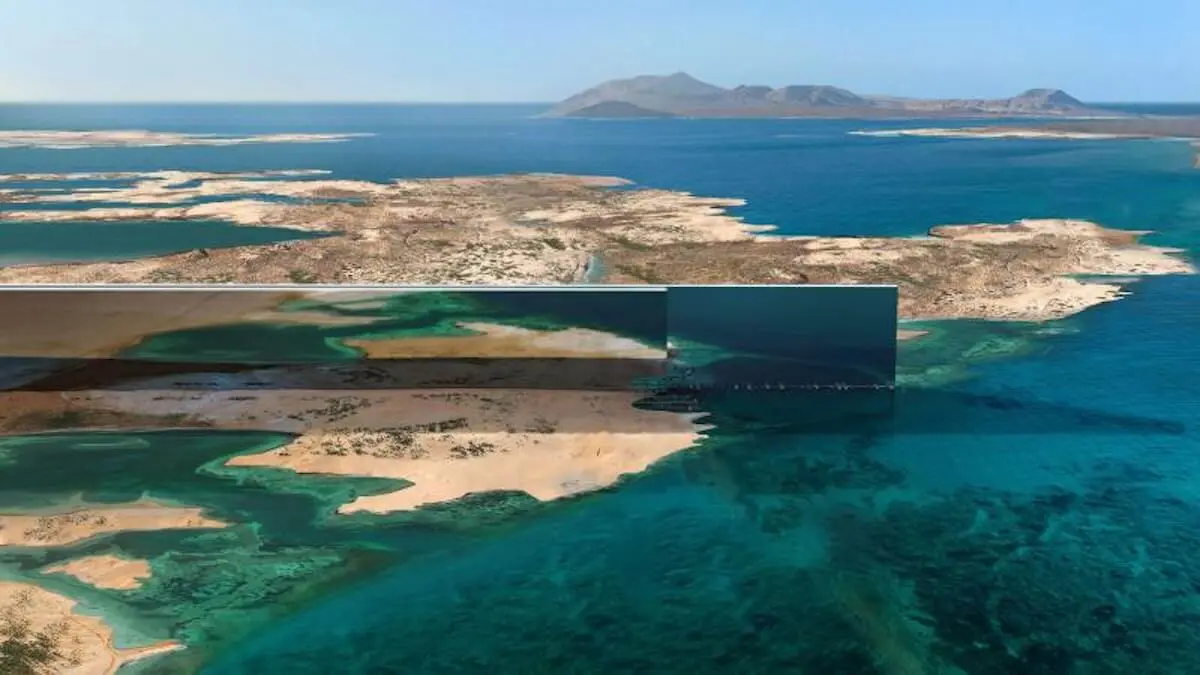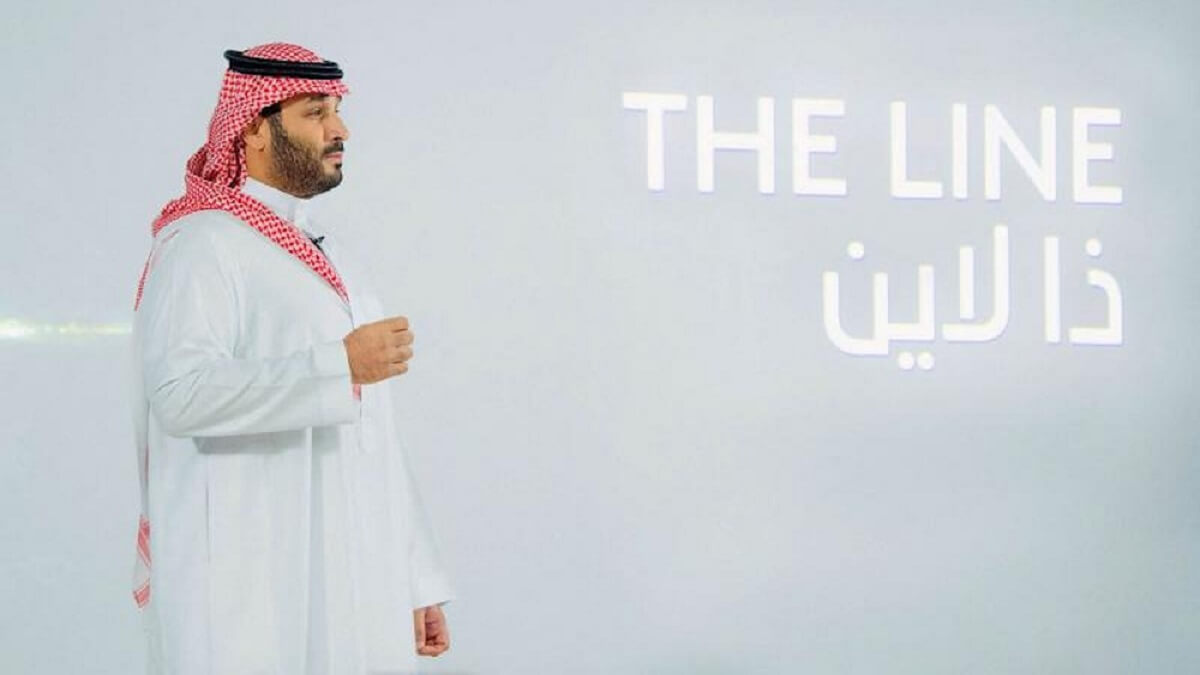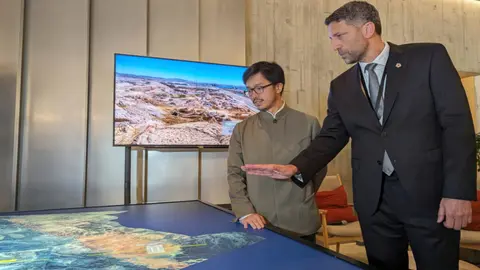Reality check in NEOM

Sudden pressure on companies to compel them to move their headquarters to Saudi Arabia is not the type of message that potential investors expected to receive from projects such as NEOM.
Negative reports are swirling around Saudi Arabia’s NEOM project. The world is not accustomed to undertakings of this magnitude. The cost of the project was initially estimated at $500 billion. However, this was later assessed at about $1.5 trillion, that is, three times the initial figure. The new estimate was based a re-evaluation taking into consideration the real cost of the whole set of projects proposed within NEOM, especially the “The Line” project, a glass walled linear city built 500 metres above sea level and stretching 170 kilometres across the desert north of Saudi Arabia.
The recent Bloomberg report on the reassessment of the size and stages of this mega project is a positive development despite the questions it raises, bearing in mind that the Asharq Bloomberg website, a Saudi media operation developed in partnership with Bloomberg News, translated and published the report. Publishing the story reflected the Saudi realisation that it needs to take a second look at the feasibility of the undertaking, or at least to consider recalibrating its size.
One is bound to hear a lot of cheering when one talks about a major architectural project such as this one from government officials who want to please their leaders. One will also receive the same reaction from major contractors and engineers who never found a new project they did not like. When one watches the promotional video about “The Line”, you have the impression you are watching a trailer for the famous science fiction movie “Total Recall.” The notion of a glass city stretching over barren desert with low or no precipitation amid scorching heat that dries up vegetation, reminds one of the fictional buildings and trains that shuttle immigrants from the planet Earth where they shelter under a glass dome in Mars.
NEOM is a bold futuristic project. But as its name suggests, being a combination of the Latin word “neo” and the first letter of the Arab word for Mustaqbal “future”, it is forward–looking. There is no doubt that whoever worked on it had a vision. Through this project the aim was to transform the natural riches of the kingdom into something more than concrete buildings, luxury cars and arms deals. Vision 2030 has a tangible social dimension. No one can deny the openness of the huge scheme and its promotion of change. There was need for a major economic development initiative to keep pace with the changes that were coming to life in Saudi Arabia.
It is well known that modern Saudi Arabia was for a while under the sway of religious Salafism. This became so intertwined with the social patterns of behaviour that the late King Fahd bin Abdulaziz, a charismatic and open-minded figure, was forced during his reign to go along with the Salafist tide. As a crown prince with broad executive powers and then as a king, he witnessed Saudi Arabia’s rivals in the likes of Juhayman Al-Otaibi in the kingdom itself and Ayatollah Khomeini in Iran, challenging the religious legitimacy of the country, albeit as the host of the Two Holy Mosques. Signs of reform began to emerge under the late King Abdullah bin Abdulaziz, who realised the danger represented by social and political Islam, in its various hues, be they Salafist, Muslim Brotherhood affiliated or Khomeini-type state-sponsored projects. But the real change came at the hands of Saudi King Salman bin Abdulaziz and his crown prince, Prince Mohammed bin Salman. Until today matters have not reached the point of a complete break with religious and social Salafism, given that Saudi society is inherently conservative. But what has happened in Saudi Arabia in recent years is beyond imagination.

The influence of Salafism on the way of thinking is not necessarily related to religious nor social aspects. It is necessary to dissociate the term Salafism from that of Wahhabism with which Saudi Arabia used to be identified. Wahhabism, with all of its connection to religion and political power, was one of the key determinants of the Saudi Arabia’s foundation and its history. Salafism is much broader than Wahhabism.
What does Salafism have to do with NEOM and the reassessment of projects like “The Line”? I think there is a connection between both. Salafism wants to determine people’s lives according to a pre-preset mould. There is no room, for instance, from a Salafist perspective, for a discussion of the dress codes, the types of financial transactions, or a woman’s relationships within society. These are settled issues once and for all. Someone has already issued a fatwa or taken the decision on how far should a man’s garb go above the ankle, or what are the allowable forms of financial transactions, such as Murabaha in Islamic banks, what styles should be prohibited, and what distance a man should keep from a woman. The social revolution that came with Vision 2030 was at the heart of attempts to re-evaluate such preset notions.
But the distance the kingdom has taken from the Salafist viewpoint must extend to all aspects of life. One cannot challenge societal rigidity and at the same time build an economic model based on rigidity.
Saudi Arabia is a wealthy country where giant companies, individuals and foreign states seek joint projects, jobs, investment or work opportunities. But something changed in this process when Riyadh appeared to impose a certain mode of operations on companies. A few years ago, for example, it set a requirement for companies operating on its soil to establish their regional headquarters in Riyadh or some other Saudi city. The decision seemed odd from many points of view, not the least of which was the fact that it forced companies’ staff to move to Saudi Arabia, or forced these companies to move their headquarters and then hire new Saudis employees in accordance with the Saudi policy of “nationalisation” of human resources (giving priority to recruitment of nationals) and thus lay off employees residing in the Emirates, Qatar, Bahrain, or Oman. There is no doubt that the nationalisation of jobs is a fundamental and important Saudi government commitment aimed at curbing unemployment. But in this day and age, policies are not usually pursued in such a rigid manner.
One cannot expect international companies, which look for a free economic environment and decent living conditions for their employees, to comply with a request of this kind.
It is not known exactly how many foreign firms have moved to Saudi Arabia, but the Saudis’ unwillingness to talk much about the issue tells us that their policy of pressuring companies has not achieved its expected results. Saudi Arabia is an attractive market, but can it really influence the decision of a giant Western information company with a market value that exceeds Saudi Arabia’s GNP? Roughly defined, the West can intrude into your decisions by the huge control it exerts over finance, business, technology, in addition to politics and the media.
Sudden pressure on companies to compel them to move their headquarters to Saudi Arabia is not the type of message that potential investors expected to receive from projects such as NEOM. Any investor will think twice before putting his millions or billions into an environment which forces unilateral decisions on him. If today companies looking to create jobs or undertake large projects in Saudi Arabia are subjected to pressures and threats, what will prevent authorities tomorrow, from trying to coerce investors, after they have committed substantial funds and effort and established their operations in the kingdom, into limiting themselves into a particular business, geographic location, or workforce? Does the investor then have the option of dismantling the glass walled building he built on the seafront, then carry it on his back and leave?
According to some reports, the marketing trips abroad undertaken by the NEOM Group have not yielded significant results, and Saudi sovereign funds will have to bear the brunt of the financing of NEOM projects. This will cause a drain on their resources and force them to provide additional financing by selling bonds, for example. It is true that Saudi Arabia is a wealthy and powerful country, but any Saudi official will most certainly wonder whether it is wise to pour between $500 to $1,500 billion dollars into one single project, with un-guaranteed yield, at the expense of the comprehensive development momentum sought by Vision 2030. As long as the problem of foreign financing has not been resolved, through other means such as the more realistic and less costly projects on the shores of the Mediterranean Sea in the north in Egypt or the Arabian Sea coast in the south in the Sultanate of Oman, then NEOM, and all its future prospects, is a project in need for reassessment and review.
Alarms should have been raised after comments reportedly made by potential Chinese investors in Hong Kong last week, according to which there is need to “dispel ambiguities” and avoid living in “a glass box”.
Talk about scaling back a project like “The Line” is a first step in the right direction. Regardless of the fact that war is raging not far away in Gaza, or that Houthi drones are reaching Eilat, that is travelling a distance further than Neom, the entire region is prey to worry.
Many countries plant the seed of a project and let it develop organically and naturally, rather than imposing a rigid template as was attempted in the former the Soviet Union which ended in failures driving away the population.
There is no justification to try to impose a rigid view just because Saudi Arabia is a wealthy country capable of building NEOM, with or without investors. Being willing to reassess ideas after a reality check is what gives such ideas their value. What matters at the end of the day is success. Just as Saudi Arabia has dispensed with religious and social Salafism, there is no place in its future or vision for economic Salafism.
Dr Haitham El-Zobaidi is the executive editor of Al Arab Publishing Group.


